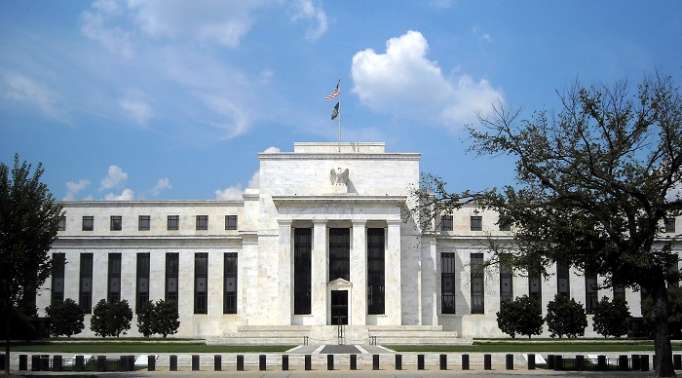The Fed’s forecasts were labeled “out of this world” by one economist at the annual National Association for Business Economics (NABE) conference in Boston this week.
On the tenth anniversary of the 2008 financial crisis, which started with an unexpected panic in an under-appreciated corner of the financial sector, the emphasis in recent Fed speeches and research on avoiding excess leverage and financial market imbalances is understandable, but risks ignoring the possibility that the next recession may result from runaway inflation.
“There clearly has been a shift at the Fed toward more attention” to leverage ratios, financial buffers and other measures of financial market resilience, said Robert Gordon, economist and social sciences professor at Northwestern University and an expert on productivity and economic growth. “They have governors who are particularly appointed to be in charge of that now in a sense that they didn’t used to.”
Earlier, Gordon told the NABE conference that the Fed’s inflation forecasts were “unbelievable” and continued strong job creation will inevitably boost prices even though few see an immediate threat.
Global trade policy tensions, an emerging market debt crisis, or some other shock may happen, but would need to be large and sustained to undermine the 3.0 percent growth that the $20 trillion U.S. economy is currently enjoying.
Few believe the U.S. housing sector poses the same risk it did in the early 2000s, and while student loans and other consumer borrowing have grown, overall household credit and debt payment levels are manageable.
Still, if the Trump administration nominates the Fed’s former financial-stability guru, Nellie Liang, as a board governor, as expected, efforts to avoid another financial crisis could increase further.
In reports to Congress the Fed has, for example, highlighted concerns about commercial real estate and the stock market where rising prices could reverse sharply as interest rates rise.
The likely choice of Liang comes after Fed chair Jerome Powell recently downplayed the relevance of traditional inflationary signals in setting interest rates and noted that in the last two recessions the trouble started in financial markets.
“Risk management suggests looking beyond inflation for signs of excesses,” he said in late August at the annual conference in Jackson Hole, Wyoming.
Yet Powell also said last month he sees only moderate risks across a dashboard of indicators, including household leverage and current bank capital levels.
TIME FOR A BUFFER?
A test may come in two months when Fed governors decide whether to raise the so-called countercyclical capital buffer for banks which would force them to set aside more capital to cushion a downturn.
Fed Governor Lael Brainard has argued the buffer should be raised from zero, citing the shot of fiscal stimulus from last year’s U.S. tax cuts and high asset prices in the context of a decade-long economic expansion.
Metrics analyzed by Liang as head of the Fed’s financial stability division are not yet cause for concern, but her research has made clear that tools like the countercyclical buffer could be used to limit credit growth before it becomes problematic.
CYCLE ENDINGS
Liang, a senior fellow at Brookings Institution, has also argued that tighter monetary policy and early intervention is best to ward off possible crises, so some expect her to oversee a broader financial stability file as a Fed governor.
Financial market imbalances could be sparked by spending from the 2017 tax cuts or further stock price gains, Goldman Sachs economists wrote recently.
Yet with unemployment at 3.9 percent, and U.S. banks stabilized by post-crisis regulations, many economists believe the end of this long business cycle will be marked by a traditional resurgence of inflation and corresponding Fed interest rate rises.
The Fed itself expects unemployment to hover between 3.5 and 3.7 percent through 2021, roughly a full percentage point below levels seen as consistent with a stable inflation rate.
“I think it’s inevitable it will be associated with higher rates of inflation,” said Harvard economics professor James Stock, a former member of President Barack Obama’s Council of Economic Advisers.
The Fed has been raising interest rates gradually since late 2015 to head off future problems but it is less clear how rising rates might affect risk-taking in the “shadow” banking sector, where hedge funds and other less-regulated firms extend credit to riskier companies. In July, the Fed warned that “borrowing among highly levered and lower-rated businesses remains elevated.”
In a recent paper presented at the Brookings Institution, former Fed Chair Ben Bernanke said one lesson from the crisis is that policymakers needed to include interactions between credit markets and the economy in their projections, in effect weaving financial stability concerns into models of how the economy responds to different shocks.
Asked how concerned he was about current financial market signals, Boston Fed President Eric Rosengren told the conference on Monday: “I don’t think there is an alarm going off. But I do think there are a lot of yellow lights.”
More about: #FED
















































